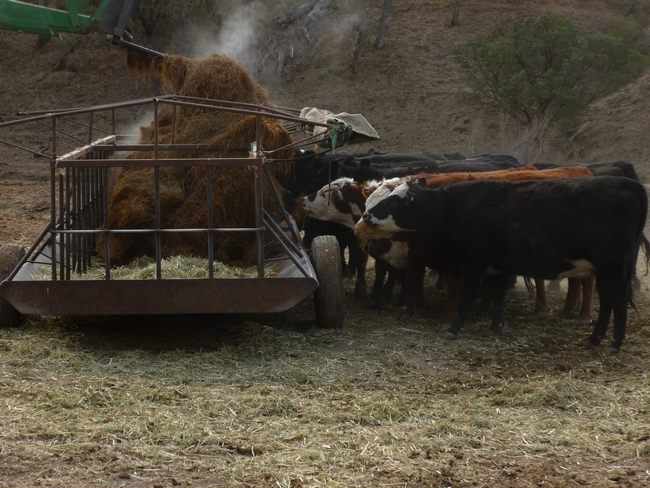
Win-win drought solution for livestock and rice producers
Innovation allows livestock producers and rice farmers to solve each other's problems

The California drought has ranchers desperate for inexpensive livestock feed. Air quality protection regulations that limit rice straw burning leave the rice industry with an abundance of typically low-quality straw to unload. Though it has rarely been done, Nader believes special treatment of rice straw will make it a nutritious cattle food. Two problems solved.
Nader will introduce producers to this new way to get through the drought at a meeting from 9 a.m. to 12 noon July 29 at the Veterans Memorial Hall, 525 W. Sycamore St., Willows, Calif.
When rice straw dries, its value as a forage declines dramatically. For 15 years, UC researchers have been trying to figure out why, but the reason for the significant change is not understood at this time.
"At one time, we thought the problem was silica in the straw," Nader said. "We grew silica-free rice. That didn't work. We thought it was the crystallinity of molecules in the straw. We parsed apart the plant, and we still don't know."
Ultimately, it was a rancher who suggested the scientists to put aside their desire to know why quality declines when rice straw dries and look for practical ways to get around it. Nader postponed his retirement to comply.
Normally, rice growers bale the straw two to four days after harvest. Nader and his colleagues instead baled the straw immediately after it exited the grain harvester. They stacked the green straw bales and covered them with a tarp to retain moisture and prevent spontaneous combustion. The result is a product they named "strawlage." One worry is mold. The researchers found that treating the straw with propionic acid prevents fungus growth.
"We haven't figured everything out, but with the drought conditions as serious as they are, we feel the time is right to share our research with growers," Nader said. "We invite producers to come to the meeting to see if this will work for their operations. Several producers who have already fed strawlage to their cattle will speak at the meeting about their experiences."
Nader believes the UC research into using rice straw for livestock feed will be helpful throughout the world.
Asian farmers produce rice straw in great abundance and their livestock would benefit significantly if the farmers worked to maintain the plant's moisture until it reaches cattle feeding troughs.
The July 29 meeting will cover:
- Nutritional advantages of strawlage over rice straw
- The challenges of baling the straw at 50 to 60 percent moisture
- Additives to prevent mold
- How to stake and tarp strawlage
- The costs associated with the practice
- How cows that ate strawlage last year fared
"Our goal is to give producers information that will allow them to make rice strawlage during this fall's harvest," Nader said. "Both cattle and rice producers are encouraged to attend."

In 1979/80, I was a foreign exchange student, in Oakmont High Scholl, in Roseville, CA. Now I’m a farmer in Portugal and our weather is very similar to the weather in California. Quit often, I browse the UC Davis web site to learn things that may be of interest to me and this is it! I would like to learn more about the “strawlage”. Since it is not possible to me to attend your meeting I would like you to considered sending me all the relevant information regarding this subject.
Yours sincerely
Antonio Perdigao
a.q.perdigao@gmail.com
Posted by Antonio Perdigao on July 11, 2014 at 5:01 AM